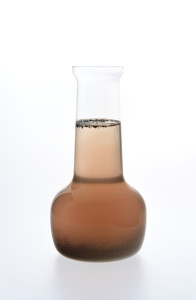Even with the correct purification systems, your laboratory’s water quality could be in danger of slipping. Here are three lesser known issues that threaten your lab’s water treatment system quality and efficiency.
We generally provide service to two types of laboratories: Testing labs, that provide testing services for urine, blood, drug samples, etc. and research laboratories. Each predominantly requires highly purified deionized water that’s absent of organic matter.
On the surface, meeting these requirements seems straightforward. A deionizer does the lion’s share of the water purification, removing every charged ion except hydrogen and hydroxyl.
Meanwhile, bacterial control equipment like an UV disinfection unit limits bacterial growth. Finally, a filter or a combination of filtration equipment removes any remaining bacteria and/or endotoxins in the water.
Over the past 30 years, this has become a common setup in labs nationwide. However, even with these systems in place, other underlying technical and infrastructure issues can impact the quality and efficiency of your water treatment system.
3 Issues That Could Affect Your Lab’s Water Treatment System
1. Failing to recirculate water
If you’ve ever seen a pool of stagnant water, you know it’s not the world’s most appealing sight (or smell). That’s because bacteria can grow rapidly in a water treatment system that isn’t moving at a constant rate of 3 feet per second or more.
The amount of growth in the purified water system will depend on the amount of bacteria in the potable water entering the system.
This is problematic for laboratories that install deionizers that feed water directly to their sources. During their off-hours, like nights and weekends, the unused water remains stagnant in the system, which can lead to bacterial growth.
To help prevent this, we recommend installing equipment to keep the water moving and help control bacteria in the system.
2. Using excessively long piping systems
Purified water distribution piping is essential for feeding deionized water to its source. However, when these piping systems become too long, they can become a cesspool for bacterial growth.
Excessively long distribution piping runs are especially common when a purified water system feeds multiple areas in a facility.
Some medical facilities, for instance, will house a deionized water system that feeds water to a laboratory, specimen processing and other areas of the facility.
These long piping systems, especially the ones that don’t recirculate, can extend hundreds – and even thousands – of feet, making it nearly impossible to limit bacteria growth. To help prevent this issue, we always recommend laboratories house their own water purification system.
3. Using improper piping material
Using the proper piping material to carry deionized water is essential for preventing bacteria growth. Certain kinds of cleaning agents will harbor organic content, as do the chemicals that bond some plastic pipes together.
We recommend only using polypropylene, plastic piping or PVDF. These systems are made with hydrophobic materials that help avoid bacteria buildup in your water.
Water is finicky. To keep it highly purified, everything from your water treatment equipment to your piping material needs to be designed and engineered correctly.
If you notice your lab’s purification quality or efficiency inexplicably dropping, it could be one of these three lesser known issues.
We’ll do more than give you a quote—we’ll visit your site to analyze your industrial water needs.


Follow Us